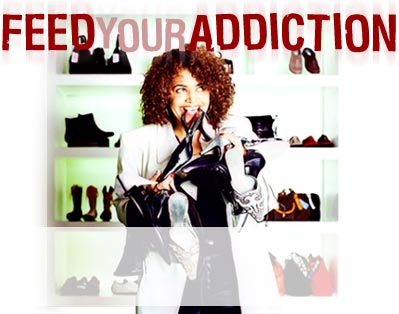
I have also been reading his blog on neuroscience that has a few posts on shopping and the brain.
Essentially the act of shopping is pleasurable because when someone is seeing something they desire the nucleus accumbens (NAcc) floods the brain with dopamine. This is what urges people to buy.
This is essentially why sadness increases the likelihood of purchase. Shoppers attempt to offset sadness by increasing this pleasure. And this is why shopping, like gambling can be addictive.
Increasing desire is a basic function of all marketing and retailing. And many marketers and retailers understand that anticipation is an important element of the shopper or consumer experience. Again, the actions of the brain guarantee this. The most intense NAcc activity is not during consumption or after purchase but before purchase. Once an item is acquired the shopper is likely to experience 'dopaminergic adaptation' so the rate of NAcc activity decreases and pleasure declines. This is one of the reasons that the shopper can feel a sense of regret after purchasing.
Of course this is not just about shopping. The Buddha observed the same nature of desire - hence his pronouncement that trying to fulfill desire is like trying to slake thirst with salt water (or something like that).
It is fairly obvious that desire drives the urge to shop. But as I have noted before, this desire is mitigated by the hip-pocket nerve - or in neuroscientific terms, the insular cortex. Just as the NAcc makes the shopper feel good when the item is anticipated, the insular cortex delivers feelings of fear when the price is introduced.
Jonah Lehrer's conclusion is that retailers need to mitigate the sense of loss that activates the insula cortex. Of course that's what salespeople have been attempting since time began. I realise he is not entirely serious as he ventures out of his area of expertise into marketing and retailing but blunt discounting is one way but certainly may not be the most effective way - or the most profitable.
Neuroscience and behavioural economics certainly shed light on shopper behaviour. Although the conclusions are hardly earth shattering for marketers or retailers - who know all too well that increasing desire and decreasing reluctance to buy is their job. What it does show us is how much of the shoppers' evaluation is 'non rational'. It was previously assumed that desire was somehow 'emotional' and resistance was a rational function of careful evaluation. As a result, brand marketing was given the task of increasing desire through emotional messages and retailing then attempted to cater to the shoppers' 'reason'. In fact both are 'emotional' - and that does have implications for shopper marketing and retailing in general. More on that in the next post...

1 comment:
I have always believed that every step forward in neuroscience is a nail in the coffin of psychology. Having said that though...
I agree that the pleasure involved in shopping comes before and to a lesser extent during the experience. Clothaire Rapaille's code research says that shopping signifies "engagement" or "return to society". The engagement and return is the beginning or the middle of the shopping journey. So, on that score, strike-up one up for neuroscience - it seems to confirm what psychology has known for a while.
Where I still think psychology has one up on neuroscience is that psychology has a very strong sympathy for and appreciation of emotion and the human beings that are subject to it. Having said that, emotional reactions and behaviour are highly logical - how they manifest themselves in individuals is the key issue. What I would like to see is a blending of rationality into the use of emotions and a blending of emotions and humanity into the use of reason in marketing.
Post a Comment